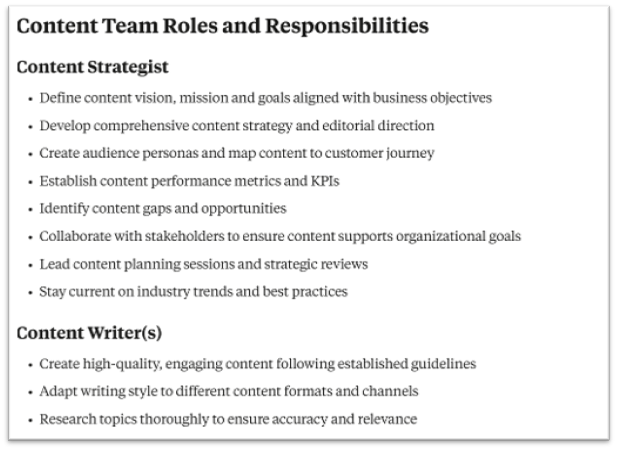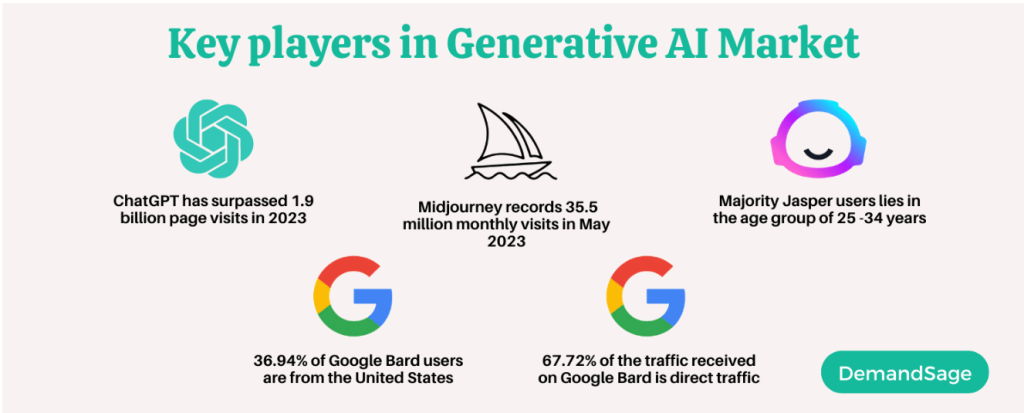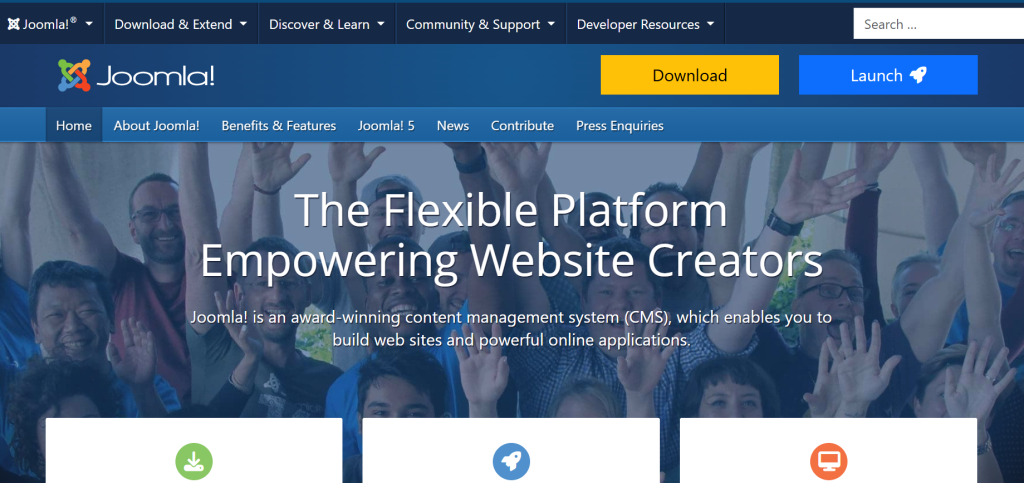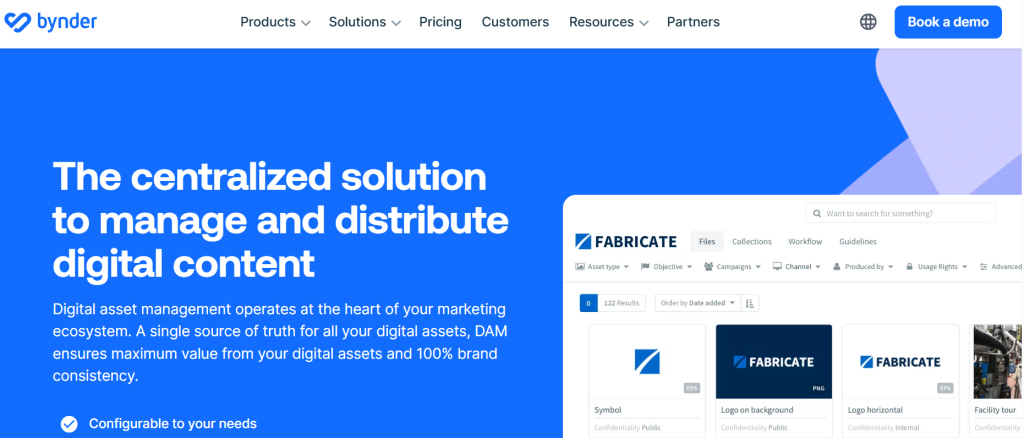Top Strategies for Building a Robust Content Governance Framework
Written by David L Hicks – March 27th, 2025
It is important to have a structure for anything you do. When it comes to creating content, designing a governance framework around it, guided by a solid content strategy, will only improve your content. A content governance framework manages everything within your content creation process, from ideation to distribution.
It keeps your content aligned with business goals and ensures brand consistency. Sadly, not all organizations have one in place. You don’t want to be one of those organizations. In this article, you’ll find essential strategies to build an effective content governance framework. With your framework in place, you’ll be well on your way to creating excellent, consistent content in a timely fashion.
Table of Contents
ToggleWhat is Content Governance?
Before jumping into developing a content governance framework, we must first understand what content governance is. Content governance sets rules on how your content is managed. Chief among these areas are:
- Content Ideation
- Content Planning
- Content Management
- Content Distribution
- Content Assessments and Analysis
Think of content governance as the law you must follow. As part of my profession, we develop and review information security policies and ensure our organization follows them through training, audits, and assessments.
Why is a Content Governance Framework Important?
A content governance framework is an absolute must for content creators who want to develop excellent content. Having a content governance framework is extremely important because it keeps your content aligned with your business goals and ensures everything stays organized and compliant. A well-structured content governance framework directly impacts the efficiency of the content production process, ensuring that all stakeholders are aligned and that issues are prevented before they arise. A bonus to having your framework is your ability to maintain quality. Content quality is one of the most important aspects that keeps your audience engaged with your content.
Other reasons why a content governance framework is important include the following:
- Promotes brand consistency
- Guides content through different stages of the sales funnel
- Adds focus to existing organizational policies
- Ensures content lifecycle is in place
- Promotes timely content delivery and distribution
- It helps with avoiding content fragmentation
You want to prevent content creation and management chaos at all costs. The last thing you want is inconsistent content; a content governance framework helps prevent that.
Key Elements of a Content Governance Framework
Looking at a content governance framework can look daunting, but it doesn’t have to be. Prior to developing one you have to understand the key elements of framework. Once you have an understanding of them, it makes creation and implementation a whole lot easier.
A content governance framework really boils down to clear roles and responsibilities, solid policies, standards, and smooth content workflows. Focus on these first. They play pivotal roles in the success of your content governance.
Defining Roles and Responsibilities

Creating clearly defined roles and responsibilities for your framework goes a long way in helping create an efficient process. Defining your organization’s roles and responsibilities helps ensure your team members understand what everyone is doing. This also helps avoid confusion among team members. For example, a typical content management team generally consists of the following:
- Content Writer(s) – Responsible for writing your organization’s content.
- SEO Specialist/Strategist – Responsible for SEO-related activities, including keyword research and on-page SEO optimization.
- Content Editor – This person is responsible for reviewing and refining your content. They ensure accuracy, consistency and that your content aligns with your brand’s voice.
- Content Distribution Manager – Plans and executes the publishing and distribution of your content.
- Content Strategist – Develops organization’s content vision and goals based on business objectives.
When developing roles and responsibilities, it’s important to consider each role’s function and any potential overlap. Too much redundancy will confuse things.
Establishing Policies and Standards

Once you have your roles and responsibilities defined, it’s time to establish your policies and standards. Your policies and your standards are essentially your rules of the road. A policy is a documented list of rules and guidelines the organization must follow. A standard is a document that explains the quality level to which organizations must adhere. Your content team follows these important documents to ensure your content is efficient, aligned with business objectives, and timely, among many things.
What’s also great about these documents is that they can take many forms. For example, you can have one policy that explains the governance around all your key items, including grammar, voice, tone, approvals, distribution, etc., or you can create multiple policies where each important area has its own document. The same can be said for your standards.
Developing Efficient Content Workflows

A clear content workflow ensures all content development team members’ tasks align with everyone else’s responsibilities and expectations. A workflow is a requirement that your content and content teams need in order to be successful.
A content workflow system acts as an enhancement to the groundwork you have established with your policies and guidelines.
A content creation workflow should include the following stages:
- Planning Stage – During this stage, the team is responsible for identifying your content goals and target audience and developing a content calendar.
- Creation Stage – This stage involves the development of the content.
- Review Stage – The review stage requires a review of your content drafts. Within this stage, editors review content to ensure content accuracy, quality, and effectiveness, among other requirements.
- Approval Stage – This stage involves a final sign-off/approval of the content.
- Distribution Stage – This stage involves publishing your content across distribution channels (your website, email, and social media outlets).
Although these are the primary stages that you must implement as part of your content workflow, there are others worth thinking about. When starting out, focus only on the primary stages. As your process matures you can add other stages like a compliance and legal review stage, a repurposing stage, and an archiving stage.
Building Your Content Governance Framework
Now that we’ve defined content governance, the importance of the framework, and the key elements, the real work begins. It’s time to dive into building your content governance model. Although it takes a great deal of work upfront, it’s not difficult to implement, and once it’s implemented, your content will thrive.
Building a content governance model involves the following:
- Align your governance framework with your organizational goals.
- Ensure your framework addresses content objectives.
- Ensure your framework addresses unique challenges.
- Allow for a flexible framework that allows you to pivot and make the necessary changes to continue success.
To successfully implement your framework, which encompasses the items listed above, you must perform the next set of actions.
Assessing Current Content Processes
You can’t just start moving without knowing where you currently are. You have to understand what you are currently doing to see what is working and what isn’t. You may want to keep aspects of your current process as you look to improve it. For example, you may already have most of your key elements documented (roles and responsibilities, policies/standards) and have a couple of stages of your content workflow in place (planning, creation, and distribution).
It’s up to you and your team to decide what is kept, modified, and removed.
You don’t want to start implementing a new process on the wrong foot. Your assessment sets the tone for building a robust and efficient content governance model.
Designing Your Content Workflow
Once you have an understanding of where you currently stand, it’s time to design content workflow. We previously touched on the required stages for a content creation workflow (planning, creation, review, approval, and distribution).
If you’re starting out with no process at all, it’s best to use those five stages as your process. This is especially the case if you have small content teams or you’re a solopreneur like myself.
Those of you with larger teams or those looking for additional stages to optimize your content and process may want to look into adding one or a couple of the following stages:
- Archiving Stage – In this stage, your team updates outdated information, refreshes underperforming content, and retires irrelevant content.
- Repurposing Stage – Your team transforms successful content into different formats or channels to extend its reach and value.
- Compliance/Legal Review Stage – Your legal team ensures that your content meets regulatory requirements, industry standards, and organizational risk management guidelines.
Implementing Editorial Guidelines
Guidelines are just as important as policies and standards, especially your editorial guidelines. Editorial guidelines ensure consistency in tone, style, and quality (punctuation and grammar) of published content. Clear editorial guidelines help maintain high-quality standards and ensure all content aligns with brand messaging. For example, you may decide certain acronyms within your industry should be used.
The last thing you want in your content is inconsistency, which can confuse your audience. Your audience is less likely to stick around with your content if it differs from piece to piece.
Tools and Technologies for Effective Content Governance
Although this isn’t a hard requirement, it’s important to understand what tools and technology can do for you. Today’s tools allow content teams to become increasingly efficient and complete writing tasks in a timely manner. For example, technology tools like AI are on the rise. 79% of content marketers stated that their content quality increased with the help of AI.
Organizations like ChatGPT, Midjourney, Jasper, and Google are benefiting from the rise of AI and technology usage in the content development space.

(Source – DemandSage)
Content Management System
If you’re going to use and implement any tool to help your content governance workflow, it should be a content management system (CMS). A CMS is a process management tool used for managing content workflows from start to finish. CMS tools like Joomala and CMS Hub are among those you should look into if you are thinking about using one.

(Source – Joomala)
Digital Asset Management System
Another tool to consider is a Digital Asset Management (DAM) system. A DAM tool enhances content governance by providing a single source for managing the entire content lifecycle. Bynder is a great DMS tool for helping manage your content lifecycle.

(Source – Bynder)
Collaboration Content System
Collaboration content platforms, such as Google Docs, improve the creation process for teams by allowing real-time collaboration and feedback. A collaboration tool allows teams to communicate with each other and share and edit content.
Having the right content tools can help streamline your governance framework and improve overall efficiency in content management.

(Source – Google Docs)
Measuring Success and Continuous Improvement
The final stretch of your workflow is just as important as the rest. Measuring and analyzing your content gives you a better understanding of its performance.
Measuring and analyzing content also has the following benefits:
- Confirms if your content is achieving your business goals.
- Determine if you need to change your content strategies by pivoting.
- Identifies high-achieving and underachieving content.
- Validates whether or not your content is making a return on your investment (ROI).
One important note regarding this task is that it needs to be performed periodically. You don’t want to analyze and assess your content once. Try performing this task at least quarterly. If you have a small content team or are a solopreneur, performing this bi-annually or annually is acceptable.
As a solopreneur, I plan to review my content at least once a year for now.
Common Challenges in Content Governance
Although having a content governance framework has benefits, it also comes with challenges. Generally, these challenges occur during the implementation and management of areas of your framework.
From a management standpoint, organizations often struggle with managing their content workload, which, unfortunately, leads to content inefficiencies. From an implementation standpoint, organizations push back on using a workflow because they feel it hinders their current output.
Luckily, there are remedies for these situations. From an implementation standpoint, you and your team can take a phased approach. Implementing the core pieces in phases helps prevent your team from feeling overwhelmed.
Issues that arise during the management phase can be remediated by keeping the workflow at a manageable level. Analyze team output and act according to what is achievable.
Summary
A content governance framework is essential for maintaining high-quality and consistent content. With a clear understanding of what a governance framework is, why it’s important, and the key elements, you’ve addressed half the battle. With those aspects understood, you’re well on your way to developing an amazing content governance framework.
As you develop and implement your content governance framework, keep in mind that as good as your strategy may be, periodic reviews and updates are required. Don’t be afraid to pivot and make changes when necessary to succeed.